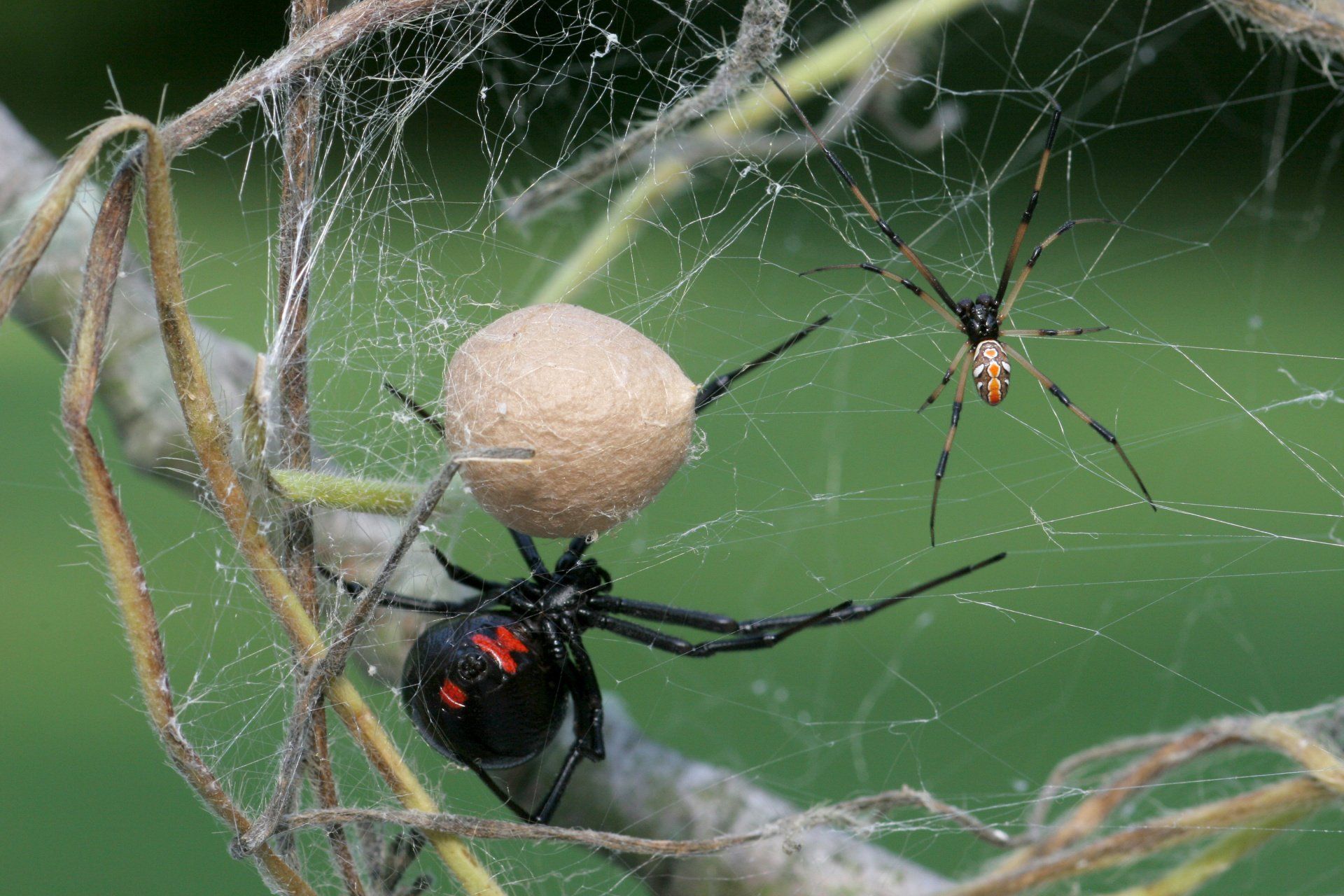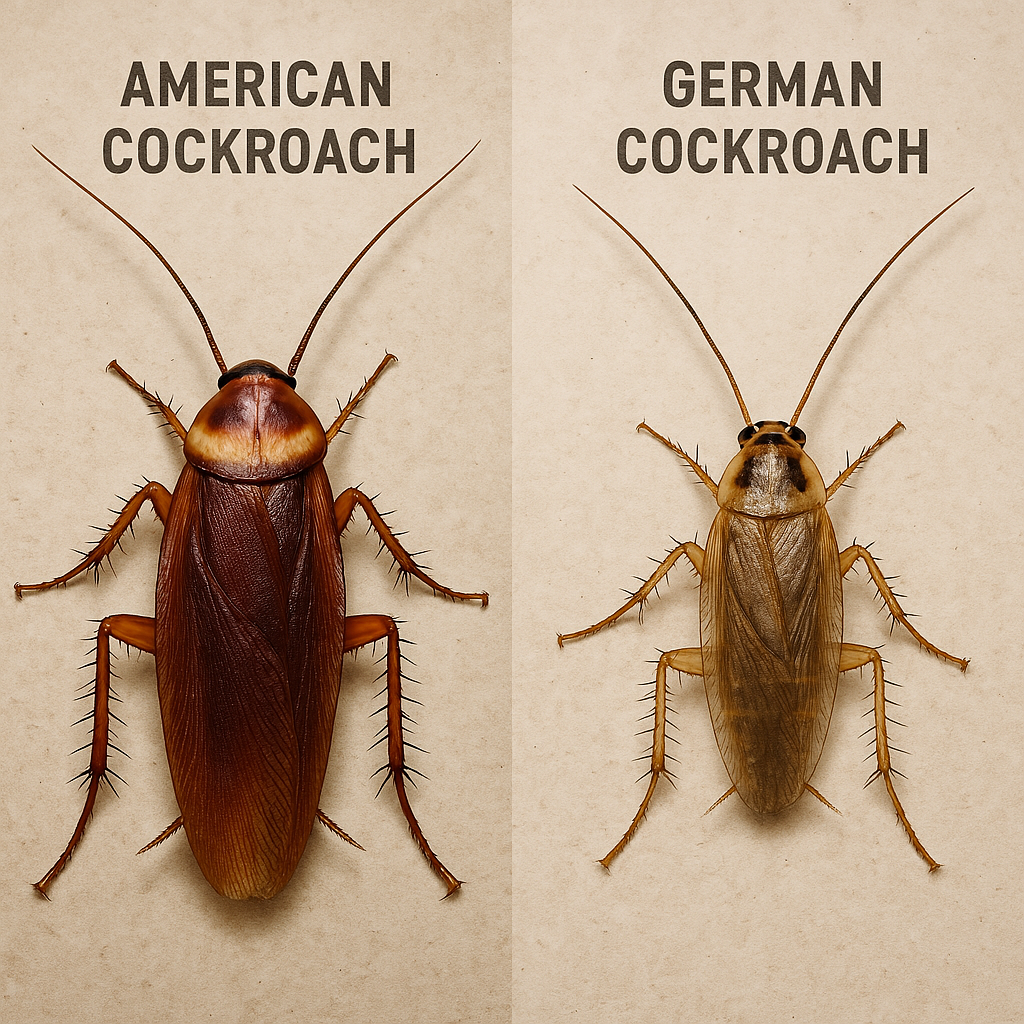What Are Black Widows

Black widow spiders were named so because it was once believed that female black widow spiders were cannibals that fed on the males after mating. This does happen on occasion but not as frequently as once thought. Regardless of why they received the name, black widow spiders are intimidating arachnids that most people are unhappy to see. Females are more imposing with their shiny black exoskeleton marked with a red hourglass symbol. They have a venomous bite which is used to disable their prey for easy consumption. Males are smaller and are not much of a threat. They tend to hide in dark, cool, undisturbed areas where they will be able to steer clear of interaction with humans or predators.
Black Widow Information & Classification
Black widow spiders are invertebrates that are part of the genus Latrodectus which also include brown widows and several regional black widow spider species. These spiders are able to create an extremely effective venom that contains the neurotoxin, Latrotoxin
What Does a Black Widow Look Like?

Female on the left (black with red hourglass marking), Male on the right
Black widow spiders are arachnids that are about an inch to an inch and a half long. Females are identified with a large, shiny, black bodies with a bright red hourglass shaped marking on their back. Males are typically half the size of an adult female black widow and are much lighter in color. Males tend to be brown or grey and won’t have a red spot.
What Do Black Widows Eat?
Black widows create webs that are close to the ground so they can create a complex, asymmetrical net of webs that gets disturbed as bugs fly or crawl by. Once a black widow feels the sensation of another bug interacting with their net, they will strike. Black widows feed on most pests that are unfortunate enough to get disturb their web or get caught but their diet consists primarily of mosquitoes, flies, grasshoppers, beetles, caterpillars, and other spiders. When a bug is caught, the black widows will inject their prey with venom and digestive enzymes which help liquefy the body so it can be consumed.
Are Black Widow Bites Dangerous?
Black widows are capable of controlling the amount of venom they use so individuals can receive a “dry” bite without any venom being injected. That being said, black widow spider bites can also deliver an injection of venom which can be dangerous to humans. The venom is 15 times stronger than rattle snake venom, but it is delivered in smaller amounts, so it is rarely fatal. The venom attacks the nervous system and causes intense pain and muscle stiffness when injected into humans. It is particularly dangerous if a child or the elderly is bitten. Symptoms of black widow bites can include:
- Swelling and redness around bite wound
- Muscle soreness, stiffness, and spasms
- Nausea and vomiting
- Sweating
- Intense abdominal and back pain
- Hypertension
- Intense pain around the bite
- Difficulty breathing
Intense pain may last longer than 12 hours and other symptoms will normally fade after 3 – 7 days. Symptoms can sometimes last for several weeks if not treated. Treatment with antivenom usually makes intense pain fade in roughly 30 minutes.
Black Widow Reproduction Ritual
Black widow spiders are generally solitary arachnids and only interact with each other during late spring when it comes time to mate. Black widows earned their name because they are opportunistic cannibals and the females have been known to eat the mate after reproduction. This has some truth as some regional specific black widow species in Latin America are reproductive cannibals who eat the mate after reproduction. However, most black widow species do not do this unless the females are hungry at the time of mating.
Male black widows are able to protect themselves by knowing which potential partners are fed through the chemicals found on their web. Once a partner is selected, the male will wrap their legs with silk soaked in sperm which are then deposited into the female’s reproductive opening. Once the eggs are fertilized, the female will spin an egg sac that can contain up to 200 eggs. This egg sac will incubate for 20 – 30 days somewhere safe wrapped up in a silk cocoon. After hatching the baby spiders will remain in that cocoon for another month before emerging.
Black Widow Life Cycle
The black widow life cycle starts when a fertilized female spins an egg sac and leaves it somewhere safe for the eggs to hatch. These eggs sacs will have up to 200 eggs which will all hatch in 20 – 30 days. Upon hatching the spiderlings will be tiny, white or pale-yellow spiders. It will take several molts and roughly 70 - 90 days to reach maturity. After reaching adulthood, female black widows will live for another 6 months while males will only live for a month.
Where Do Black Widows Live?
There are several species of black widows that exist across the globe. They thrive in temperate regions in North and South America, Europe, Asia, Africa, and Australia. The ones predominantly in North America and the United States include eastern black widows (Latrodectus mactans), northern black widows (Latrodectus variolus), and western black widows (Latrodectus hesperus).
Black Widow Habitat
Black widow spiders prefer dark, dry, low, and undisturbed locations to build their webs. When black widows are outside, these places can include under patios or decks, inside firewood, hollow tree stumps, or large piles of debris. Black widows will look for somewhere to remain warm throughout the year so they will sometimes move indoors where they can be protected from the elements and predators. When black widows move indoors, they can usually be found inside garages, basements, barns, outhouses, sheds, and crawl spaces.
How to Get Rid of Black Widows
Getting rid of black widow spiders can be done by decluttering and organizing spaces where black widow activity is likely. Keeping spaces like basements, garages, sheds, and barns clean and free of clutter will help reduce the presence of other pests for black widows to feed on. If black widows can’t find a stable source of food, they will move on. If black widow webbing has been found, it is important to use a vacuum to clear the web and any black widow egg sacs. Since black widows are venomous, it is important to wear gloves to prevent a black widow bite when treating and cleaning and area for black widows.
Contact a Professional to Help Get Rid of Black Widows
If you are dealing with a black widow infestation or want to ensure that black widows are not a problem in the future, call EcoGuard Pest Management. Our team of licensed and experienced black widow spider control experts will identify problematic areas and create an effective plan designed to treat and exterminate black widows from your property.

















